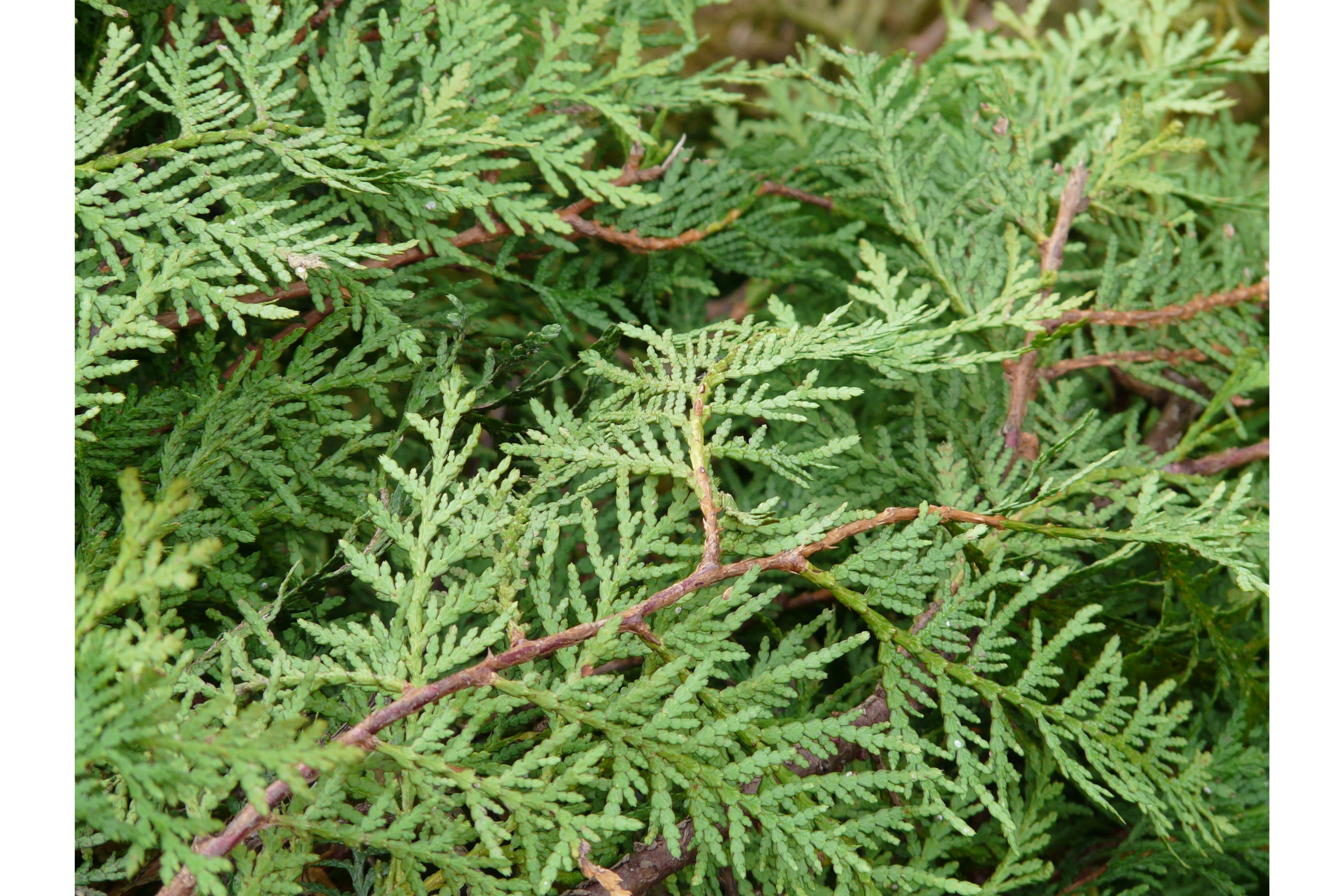Korean arborvitae
(Thuja koraiensis)

Description
Thuja koraiensis, also called Korean arborvitae, is a species of Thuja, native to Korea and the extreme northeast of China (Changbaishan). Its current status is poorly known; the small population in China is protected in the Changbaishan Nature Reserve, as is the small population in Soraksan Nature Reserve in northern South Korea, but most of the species' range in North Korea is unprotected and threatened by habitat loss. It is an evergreen shrub or small tree growing to 3–10 m tall. The foliage forms flat sprays with scale-like leaves 2–4 mm long (up to 15 mm long on strong-growing shoots), matt dark green above, and with broad, vivid white stomatal wax bands below. The cones are oval, yellow-green ripening red-brown, 7–11 mm long and 4–5 mm broad (opening to 6–9 mm broad), with 8-12 overlapping scales. It is occasionally grown as an ornamental tree for the contrast between the green upper and bright white lower sides of the foliage, though planting is limited by the low availability of seeds. Thuja is a genus of coniferous trees or shrubs in the Cupressaceae (cypress family). There are five species in the genus, two native to North America and three native to eastern Asia. The genus is monophyletic and sister to Thujopsis. Members are commonly known as arborvitaes (from the Latin term for 'tree of life'), thujas or cedars. Thuja are evergreen trees growing from 10 to 200 feet (3 to 61 metres) tall, with stringy-textured reddish-brown bark. The shoots are flat, with side shoots only in a single plane. The leaves are scale-like 1–10 mm long, except young seedlings in their first year, which have needle-like leaves. The scale leaves are arranged in alternating decussate pairs in four rows along the twigs. The male cones are small, inconspicuous, and are located at the tips of the twigs. The female cones start out similarly inconspicuous, but grow to about 1–2 cm long at maturity when 6–8 months old; they have 6-12 overlapping, thin, leathery scales, each scale bearing 1–2 small seeds with a pair of narrow lateral wings. The five species in the genus Thuja are small to large evergreen trees with flattened branchlets. The leaves are arranged in flattened fan shaped groupings with resin-glands, and oppositely grouped in 4 ranks. The mature leaves are different from younger leaves, with those on larger branchlets having sharp, erect, free apices.
Taxonomic tree:







